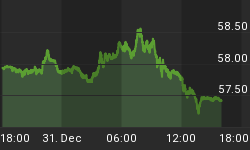Following criticism that it wasn't doing enough to protect its workers from the pandemic, Amazon is hoping to make up for it with the use of thermal cameras at some of its facilities, opening up another potential avenue to criticism, this time with a privacy element. In late March, Amazon started using thermal cameras to do temperature checks at some of its facilities, noting in a blog post that workers with a temperature above 100.4 degrees Fahrenheit would be sent home and only allowed back after three days without a fever.
The cameras do not detect viral infection; rather, they detect body temperatures above a normal baseline.
Amid the COVID-19 crisis, Amazon has fired several employees who had publicly criticized the company over conditions at its facilities. And later this week, Amazon employees are preparing a virtual walkout to protest those actions.
Meanwhile, Amazon-owned Whole Foods is keeping an eye on stores at risk of unionizing through an interactive heat map, according to Business Insider.
The map is powered by a scoring system, which assigns a rating to each of Whole Foods’ 510 stores based on the likelihood that their employees might form or join a union. The company uses more than two dozen different metrics to measure stores, including employee loyalty, racial diversity, calls to a “tip line”, and others.
While thermal camera screening can certainly play an important role in slowing down the spread of the virus, it’s one of those technologies that can get out of hand.
Amazon employees may not feel safer. Instead, they may feel the heavy burden of big brother.
And that same technology is being used by intelligence, military, police and other security agencies for catching criminals, smugglers and illegal border crossers.
Thermal cameras are still surveillance cameras.
Elsewhere, thermal screening already went beyond the use in factories, warehouses, hospitals.
In the UK, police are using thermal imaging technology to enforce social-distancing guidelines during the coronavirus crisis. Some countries that have imposed curfews during the pandemic are using this technology to monitor streets and parks.
Nor are thermal cameras the only thing we should be concerned about. The global pandemic has unleashed a new era of digital surveillance, and the threat of mission creep is real and present.
Once the pandemic is over, we will be left with this uncaged technology that will be nearly impossible to lure back under lock and key.
If we’re already measuring grocery store employee loyalty, we’ve crossed the line under the guise of pandemic protection.
China is a case in point, and the United States is not far behind no matter what costumes of liberty, privacy and democracy it dons.
Related: Struggling U.S. Airlines Get $17.5 Billion Bailout
In China, the authorities have used phone numbers and location data to trace residents who had left the initial center of the outbreak, Wuhan. They traced them, tracked them and then placed them under forced isolation.
Some countries have also employed drones to monitor excessive social interaction. These drones are fitted with specialized sensors and computer vision systems that can monitor temperature, heart and respiratory rates to detect people sneezing and coughing in crowds.
Authorities in some Asian countries are using geofencing, a technological process that draws virtual fences around quarantine zones. In Western Australia, lawmakers approved a bill last month to install surveillance gadgets to monitor the homes of those placed under quarantine.
In Hong Kong, the authorities are using connected wristbands to ensure patient compliance.
In some European Union countries, they are monitoring movements by tapping citizens’ telecommunications data, though they insist identities are concealed.
In the US, the White House has considered using mobile location data analytics for tracing contact among residents. The Trump administration has been working with major tech firms to devise ways to use mobile location data to understand the path of the pandemic.
Earlier this month, the Wall Street Journal reported that federal and state governments are using location data gleaned from the online advertising industry. The report said that the data is anonymized, so authorities are studying general population movement rather than tracking individuals.
Still, reports of those efforts have already sparked concern from privacy and civil liberties advocates--even more so because there are no federal laws regulating the use of these data collection practices.
It’s a slippery slope, and we’re already halfway down it.
By Michael Kern for Safehaven.com
More Top Reads From Safehaven.com:

















